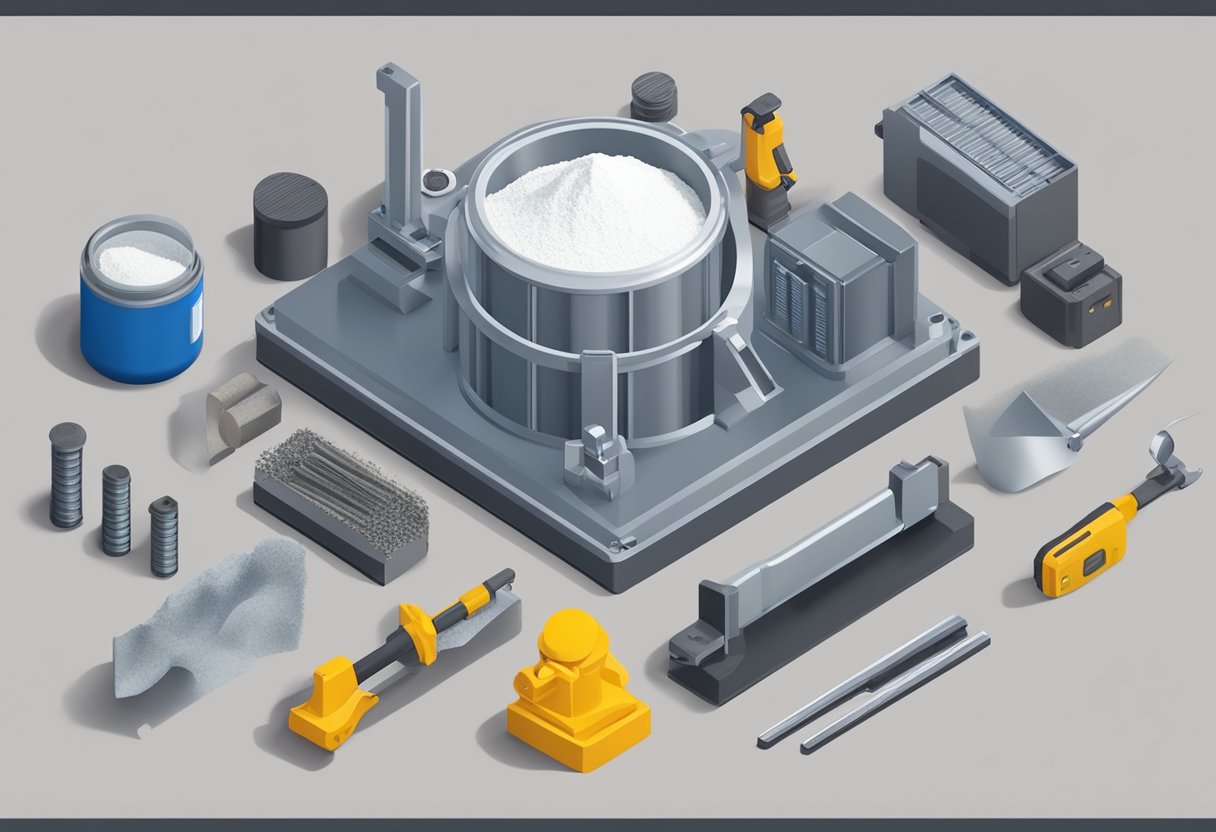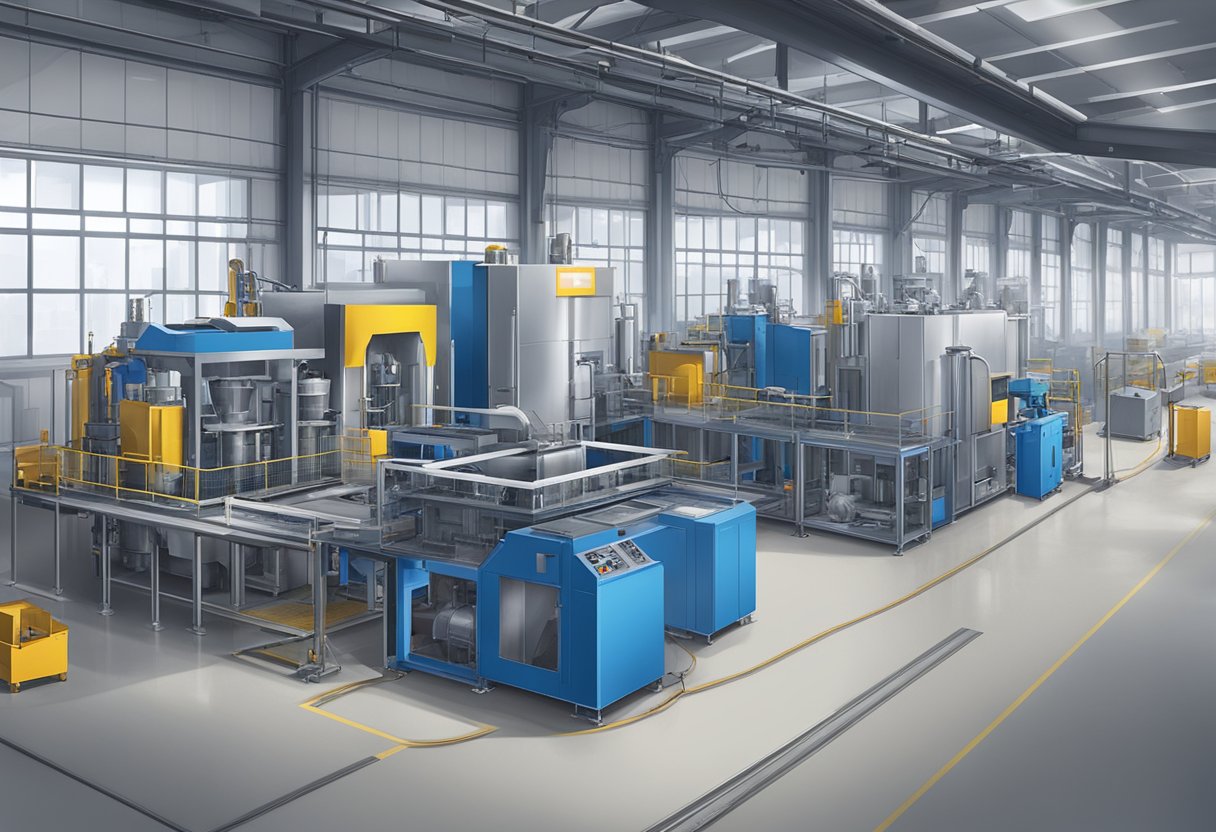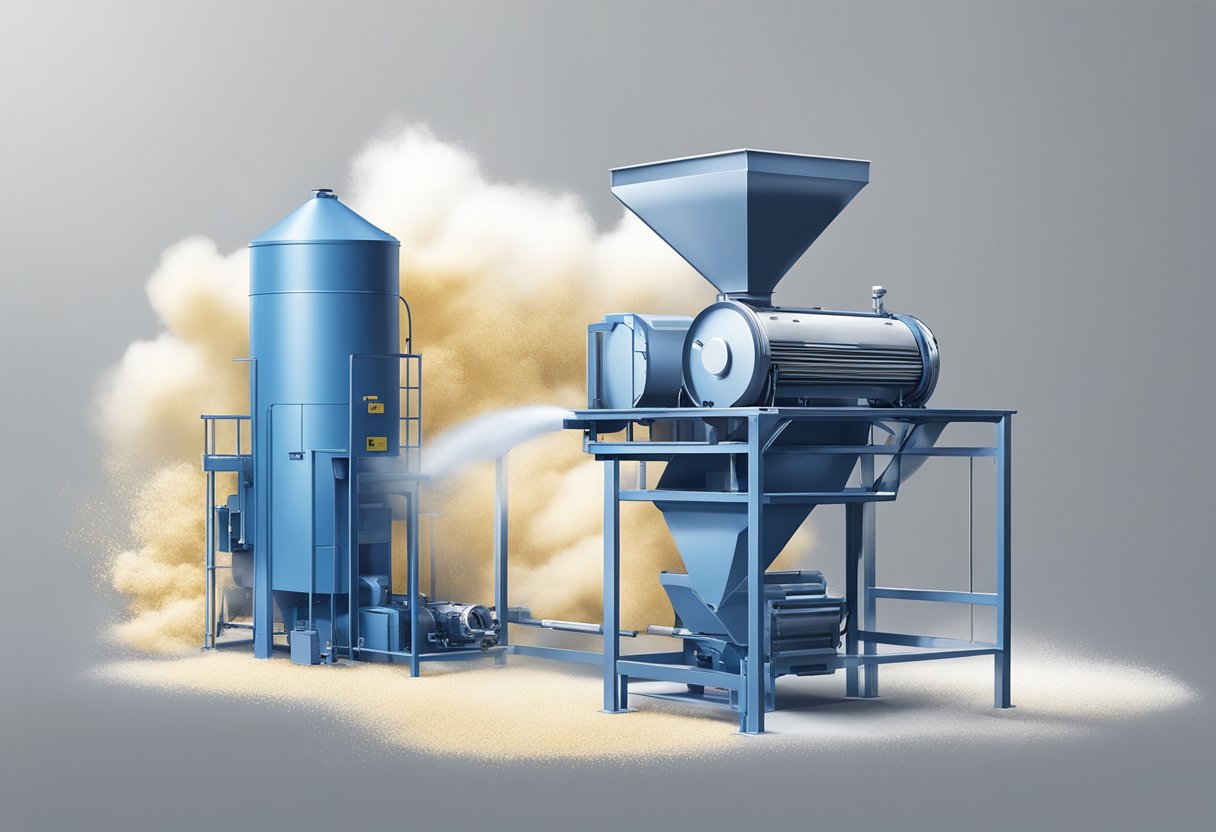CTP Powder: What it is and How it Works
19/01/2024
CTP powder, also known as choline theophyllinate powder, is a popular nootropic supplement that has gained attention for its cognitive-enhancing properties. It is a combination of choline, a nutrient that is essential for brain health, and theophylline, a compound found in tea that has stimulating effects.

Research has shown that choline supplementation can improve memory, focus, and overall cognitive function. Theophylline, on the other hand, has been found to increase alertness and reduce fatigue. When combined, these two compounds work synergistically to enhance cognitive performance.
CTP powder is often used by students, professionals, and athletes who are looking to improve their cognitive abilities. It is also commonly used by individuals who are looking to combat age-related cognitive decline. While more research is needed to fully understand the effects of CTP powder, early studies suggest that it may be a promising cognitive enhancer.
CTP Powder Overview

Definition and Composition
CTP powder, also known as Chlorothalonil powder, is a type of fungicide that is widely used in agriculture to control fungal diseases in crops. It is a white crystalline powder that is insoluble in water and has a molecular weight of 265.7 g/mol. The chemical formula for CTP powder is C8Cl4N2.
CTP powder contains 54.0% active ingredient, which is Chlorothalonil. It also contains other inert ingredients, such as fillers and binders, that help to make the powder more stable and easier to handle.
History and Development
CTP powder was first developed in the 1960s by the Dow Chemical Company. It was initially used as a fungicide in the United States, but its use soon spread to other countries around the world. Today, CTP powder is one of the most widely used fungicides in agriculture.
Over the years, CTP powder has undergone several improvements to make it more effective and safer to use. For example, newer formulations of CTP powder have been developed that are less toxic to humans and the environment. These formulations are also more effective at controlling fungal diseases in crops.
In conclusion, CTP powder is a widely used fungicide in agriculture that has a long history of development and improvement. Its chemical composition and effectiveness make it an important tool for farmers and growers in controlling fungal diseases in crops.
Manufacturing Process

Raw Material Preparation
The manufacturing process of CTP powder begins with the preparation of raw materials. The main raw materials used in the synthesis of CTP powder are calcium carbonate and phosphoric acid. These materials are carefully selected and tested to ensure they meet the required specifications. The calcium carbonate is usually sourced from natural limestone deposits, while the phosphoric acid is obtained by reacting phosphate rock with sulfuric acid.
Synthesis and Reaction
Once the raw materials have been prepared, the synthesis of CTP powder can begin. The first step involves the reaction of calcium carbonate and phosphoric acid to form calcium phosphate. This reaction takes place in a reactor vessel under carefully controlled conditions of temperature, pressure, and pH. The resulting calcium phosphate is then reacted with sodium hydroxide to form tricalcium phosphate.
Purification and Drying
The tricalcium phosphate is then purified and dried to form CTP powder. The purification process involves the removal of impurities such as iron, aluminum, and fluoride using a combination of filtration, precipitation, and ion exchange. The purified CTP powder is then dried to remove any residual moisture and to ensure that it meets the required specifications for particle size, purity, and chemical composition.
Overall, the manufacturing process of CTP powder is a complex and highly controlled process that requires careful attention to detail and strict adherence to quality standards. By following these rigorous manufacturing procedures, manufacturers can produce high-quality CTP powder that is suitable for a wide range of applications in the food, pharmaceutical, and agricultural industries.
Applications of CTP Powder

CTP powder, or photopolymer powder, has a wide range of applications in various industries. Here are some of the most prominent uses of CTP powder:
Printing Industry
CTP powder is widely used in the printing industry to create printing plates. The powder is applied to a substrate, such as aluminum or polyester, and is then exposed to UV light through a mask or a digital file. The exposed areas of the powder harden and become insoluble, while the unexposed areas can be washed away with a solvent, leaving behind a relief image that can be used for printing.
CTP powder has several advantages over traditional printing plates. It is faster and more efficient, as it eliminates the need for film and the associated processing steps. It also produces sharper and more consistent images, as well as greater detail and resolution.
Photographic Processes
CTP powder is also used in photographic processes, such as the production of holograms and 3D prints. In these applications, the powder is applied to a substrate and exposed to a laser or other light source. The exposed areas of the powder harden and become a relief image, which can then be used to create a hologram or a 3D print.
CTP powder is particularly well-suited for these applications due to its high resolution and fine detail capabilities. It also produces a smooth surface finish, which is important for creating high-quality holograms and 3D prints.
Thermal Imaging
Finally, CTP powder is used in thermal imaging applications, such as the production of thermal transfer ribbons and labels. In these applications, the powder is applied to a substrate and exposed to heat, which causes the powder to harden and become a relief image.
CTP powder is ideal for thermal imaging applications due to its high heat resistance and durability. It also produces sharp and consistent images, which are important for creating high-quality thermal transfer ribbons and labels.
In conclusion, CTP powder has a wide range of applications in various industries, including printing, photography, and thermal imaging. Its high resolution and fine detail capabilities, as well as its efficiency and durability, make it a popular choice for many applications.
Market Analysis
Demand and Supply Trends
The global market for CTP powder is expected to grow steadily over the next few years due to the increasing demand for high-quality printing. The demand for CTP powder is driven by the growing popularity of digital printing technology, which offers several advantages over traditional printing methods. The rise in demand for high-quality printing has led to an increase in the production of CTP powder by manufacturers across the world. The growing popularity of CTP powder is also due to its eco-friendliness and cost-effectiveness.
Cost Factors
The cost of CTP powder is influenced by several factors, including raw material prices, production costs, and transportation costs. The price of CTP powder is also influenced by the demand and supply trends in the market. Manufacturers are constantly looking for ways to reduce the production costs of CTP powder to make it more affordable for consumers. The use of advanced technologies and automation in the production process has helped reduce the cost of CTP powder in recent years.
Regional Market Insights
The Asia-Pacific region dominates the global CTP powder market due to the growing demand for printing and packaging materials in countries such as China and India. The region is also home to several major CTP powder manufacturers. North America and Europe are also significant markets for CTP powder due to the increasing demand for high-quality printing in these regions. The Middle East and Africa and Latin America are expected to witness significant growth in the CTP powder market in the coming years due to the increasing adoption of digital printing technology in these regions.
Overall, the CTP powder market is expected to grow steadily over the next few years due to the increasing demand for high-quality printing. Manufacturers are constantly looking for ways to reduce the production costs of CTP powder to make it more affordable for consumers, which is expected to drive the growth of the market in the coming years.
Quality and Standards
Regulatory Compliance
CTP powder is subject to a number of regulatory requirements to ensure its safety and efficacy. In the United States, the Food and Drug Administration (FDA) regulates the production and sale of CTP powder as a dietary supplement. This means that manufacturers must comply with strict labeling requirements and ensure that their products are free of contaminants and meet certain quality standards.
In addition to FDA regulations, CTP powder may also be subject to regulations in other countries where it is sold. For example, in the European Union, CTP powder is regulated as a novel food, meaning that it must undergo a safety assessment before it can be sold to consumers.
Quality Control Methods
To ensure the quality and purity of CTP powder, manufacturers use a variety of quality control methods. These may include testing for contaminants, such as heavy metals and pesticides, as well as ensuring that the product contains the correct amount of active ingredients.
Manufacturers may also use third-party testing to verify the quality of their products. This can help to ensure that the product meets regulatory requirements and is safe for consumers to use.
Overall, the quality and standards for CTP powder are designed to ensure that consumers receive a safe and effective product. Manufacturers must comply with regulatory requirements and use quality control methods to verify the purity and potency of their products.
Environmental Impact
Waste Management
CTP powder production generates waste, which can have a negative impact on the environment if not managed properly. The waste generated during the production process includes unused raw materials, packaging materials, and by-products.
To minimize the environmental impact of waste generated during the production process, manufacturers must implement effective waste management strategies. These strategies include recycling, reducing waste generation, and proper disposal of waste.
Emission Controls
The production of CTP powder can also result in emissions of various pollutants, including carbon dioxide, nitrogen oxides, and particulate matter. These emissions can contribute to air pollution and have negative impacts on human health and the environment.
To minimize the environmental impact of these emissions, manufacturers must implement effective emission control measures. These measures include the use of air pollution control equipment, such as scrubbers and filters, to capture and remove pollutants from the air.
Overall, the production of CTP powder can have significant environmental impacts. However, by implementing effective waste management and emission control measures, manufacturers can minimize these impacts and promote a more sustainable production process.
Safety and Handling
Storage Guidelines
When it comes to storing CTP powder, it is important to keep it in a cool, dry place. This will help to prevent any moisture from getting into the powder, which can cause it to clump together and become unusable. Additionally, it is important to keep the powder away from any sources of heat or direct sunlight, as this can also cause the powder to deteriorate.
To ensure that the powder remains in good condition, it is recommended that it be stored in an airtight container. This will help to keep out any dust or other contaminants that could affect the quality of the powder.
Handling Precautions
CTP powder should be handled with care to prevent any accidental exposure. It is important to wear gloves and a mask when handling the powder, as it can be harmful if it comes into contact with the skin or is inhaled.
When mixing the powder, it is important to do so in a well-ventilated area. This will help to prevent any dust from getting into the air and potentially causing respiratory problems.
In the event that the powder is spilled, it should be cleaned up immediately using a damp cloth or mop. This will help to prevent any further contamination and ensure that the area is safe for other people to use.
Overall, by following these simple storage and handling guidelines, it is possible to ensure that CTP powder remains safe and effective for use in a variety of applications.
Technological Advancements
Innovations in Production
CTP powder is a versatile and highly sought-after product in the chemical industry. As technology advances, new and improved methods of production have emerged, making the manufacturing process more efficient and cost-effective. One such innovation is the use of continuous processing, which allows for a steady flow of material and reduces the need for batch processing. This method also enables better control over the quality and consistency of the final product.
Another technological advancement in CTP powder production is the use of automation and robotics. This has led to more precise and accurate measurements, reduced human error, and increased production rates. Additionally, the use of renewable energy sources such as solar and wind power has made the production process more sustainable and environmentally friendly.
Emerging Applications
CTP powder has a wide range of applications in various industries, including automotive, electronics, and aerospace. With the development of new technologies, the potential uses of CTP powder continue to expand. One emerging application is in the field of energy storage, where CTP powder is being explored as a potential material for next-generation batteries.
Another area of interest is in the development of new coatings and adhesives. CTP powder has unique properties that make it an ideal candidate for use in these applications, such as its high thermal stability, chemical resistance, and flame retardancy. As research continues, it is likely that more innovative uses for CTP powder will be discovered.
Overall, technological advancements in CTP powder production and emerging applications demonstrate the versatility and potential of this valuable material. As research and development continue, it is expected that CTP powder will play an increasingly important role in various industries.
Challenges and Solutions
Technical Challenges
CTP powder has been widely used in the printing industry due to its superior performance in reducing pollutants. However, there are some technical challenges that need to be addressed to ensure its effectiveness. One of the major challenges is the difficulty in achieving complete conversion of the pollutants into harmless substances. This is due to the complex composition of the pollutants, which can vary depending on the type of ink and paper used in the printing process.
Another technical challenge is the potential for the CTP powder to cause blockages in the printing press. This is because the powder can accumulate in the ink ducts and other parts of the press, which can lead to reduced printing quality and increased downtime for maintenance.
Strategic Solutions
To overcome the technical challenges associated with CTP powder, there are several strategic solutions that can be implemented. One solution is to optimize the printing process to reduce the amount of pollutants generated. This can be achieved by using more eco-friendly inks and paper, as well as implementing best practices for ink management and press maintenance.
Another solution is to use CTP powder in combination with other technologies, such as electrostatic precipitators or activated carbon filters. These technologies can help to further reduce the concentration of pollutants in the air, while also preventing blockages in the printing press.
Overall, by addressing the technical challenges associated with CTP powder and implementing strategic solutions, it is possible to achieve significant reductions in air pollution and improve the sustainability of the printing industry.




